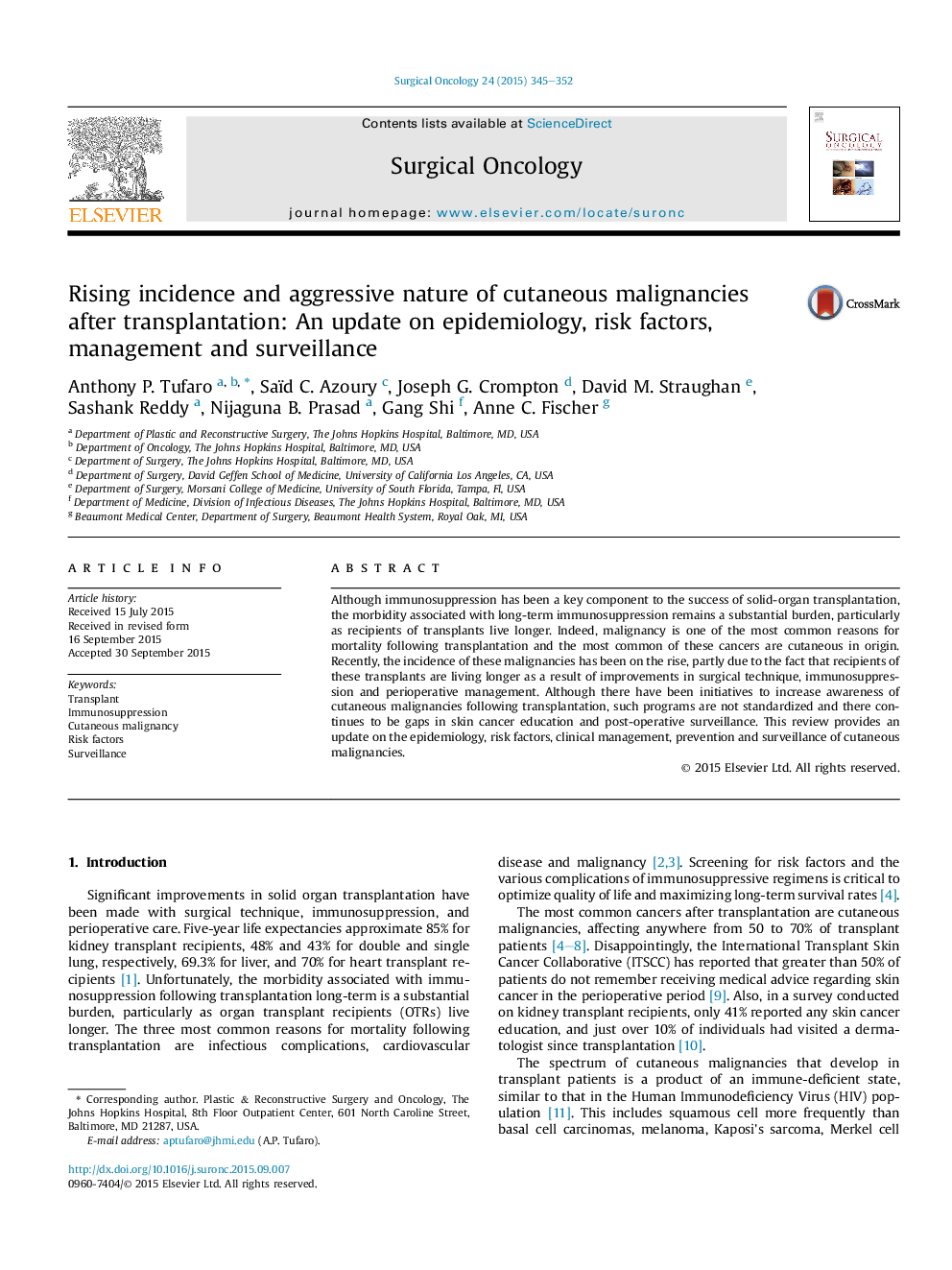| Article ID | Journal | Published Year | Pages | File Type |
|---|---|---|---|---|
| 3997757 | Surgical Oncology | 2015 | 8 Pages |
•Cutaneous malignancies are a top cause of mortality in organ transplant recipients (OTRs).•As OTRs live longer, the incidence of skin cancers has increased.•The development of skin cancers is influenced by the immunosuppressive regimen and duration.•Surgical excision is often the first-line treatment for primary or recurring skin cancers in OTRs.•Better multidisciplinary strategies for prevention and early detection are needed.
Although immunosuppression has been a key component to the success of solid-organ transplantation, the morbidity associated with long-term immunosuppression remains a substantial burden, particularly as recipients of transplants live longer. Indeed, malignancy is one of the most common reasons for mortality following transplantation and the most common of these cancers are cutaneous in origin. Recently, the incidence of these malignancies has been on the rise, partly due to the fact that recipients of these transplants are living longer as a result of improvements in surgical technique, immunosuppression and perioperative management. Although there have been initiatives to increase awareness of cutaneous malignancies following transplantation, such programs are not standardized and there continues to be gaps in skin cancer education and post-operative surveillance. This review provides an update on the epidemiology, risk factors, clinical management, prevention and surveillance of cutaneous malignancies.
